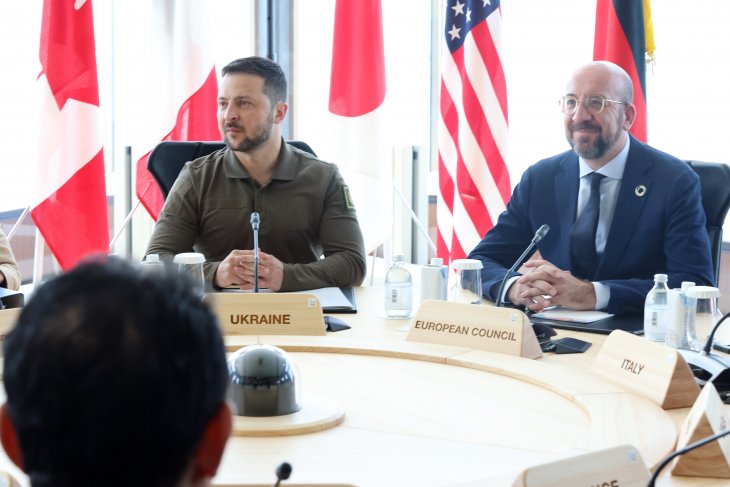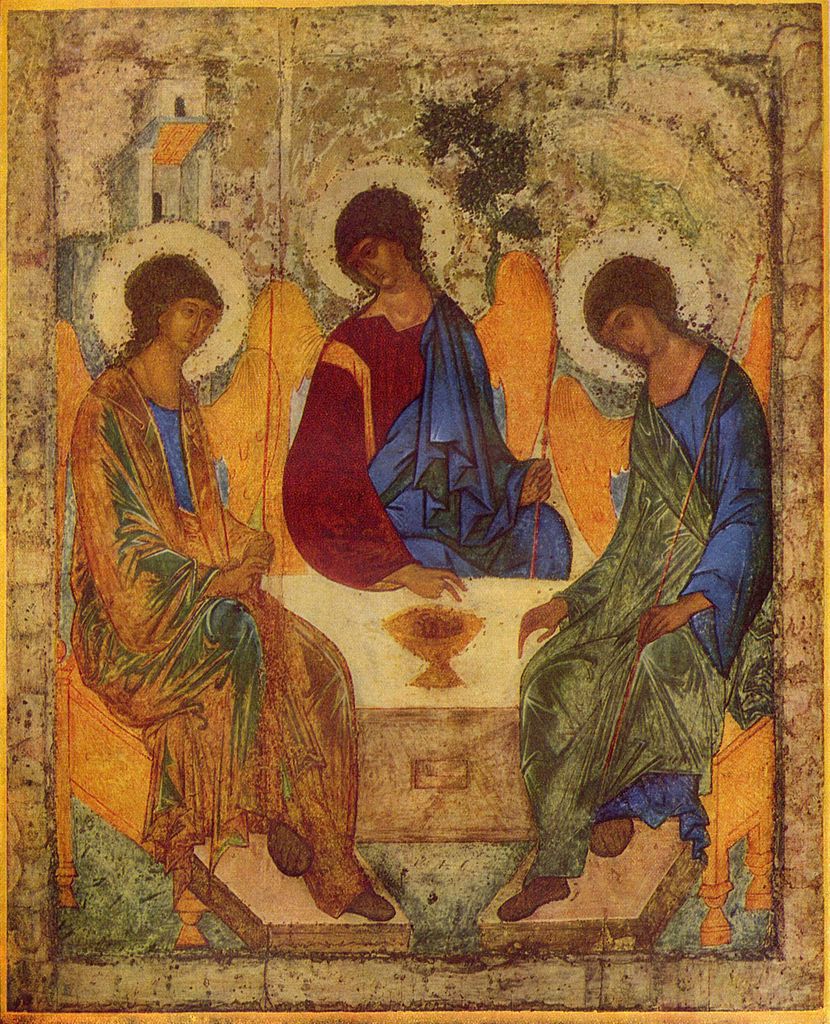From May 19 to 21, Japan hosted the most recent meeting of the seven heads of state (Canada, France, Germany, Italy, Japan, the United Kingdom and the United States) as well as the European Union in the so-called G7 format.

Ukraine President Zelenskyy and European Council President Charles Michel at the 2023 G7 summit. Photo: European Council
Overall, the key point on the agenda was certainly strengthening the unity of democratic states in the vast Indo-Pacific region to counter growing coercion from China.
The new momentum in upgrading this unity has, however, generated the need to confront the common threat produced by Russia’s war against Ukraine, which is coming to a pivotal juncture.
Empowering for victory
The urgency of the task to expand support for Kyiv in striving to defeat Moscow’s aggression was underscored by President Volodymyr Zelenskyy, who opted to make the long trip to Hiroshima. The content of this task has changed since the 2022 G7 meeting in Bavaria and is presently not so much on bolstering Ukraine’s capacity to withstand Russian attacks but more on empowering it to achieve victory (Nezavisimaya gazeta, May 18).
Much attention was granted by the Western leaders and their invited guests to expanding and tightening the sanctions regime against Russia, as sanctions have been an instrument that the G7 excels at wielding (Izvestiya, May 19).
Suffice to say that the contraction of Russian oil and gas revenues during the first four months of this year amounts to 52 percent as compared to the same period in 2022 (Kommersant, May 12). Russian companies are exploiting every possible channel and offering deep discounts for sustaining export volumes; however, the result has been a deep decline in their profits as well as plentiful supply on the global market. In truth, the price for natural gas in Europe has returned to pre-war levels (Izvestiya, May 18). Besides closing loopholes in the restrictions on Russia’s high-tech imports (warnings have been issued to several Central Asian states), the EU is now preparing a ban on the export of Russian diamonds, which will have a combined material and symbolic impact (Fontanka.ru, May 16; see EDM, May 18; RBC, May 19).
“I do not need a ride, I need ammo.”
During the war’s early days, Zelenskyy gave us a quote for the history books in saying “I do not need a ride, I need ammo.” Now, he argues that, while sanctions are commendable, Ukraine needs more and better weaponry (Svoboda, May 16). The Ukrainian army surprises Western experts with its ability to quickly learn the incoming sophisticated weapon systems, proven yet again with the intercept of the mixed air group approaching from Bryansk region on May 13 (Kommersant, May 13).
Russian military officials decided not to acknowledge the loss of a Su-34 fighter-bomber, Su-35 fighter and two Mi-8 helicopters, but the names of the nine pilots killed in that action were uncovered by keen journalists and the Russian “military-patriotic” bloggers have raised a serious stink about it (Topwar.ru, May 17; Meduza, May 18).
Retaliation was supposed to be devastating as Kyiv came under a sequence of missile and drone attacks, which, however, were effectively countered. Even so, Russian propaganda tried to claim a hit on a MIM-104 Patriot battery by a Kh-47M2 Kinzhal hypersonic missile as a major success (Rossiiskaya gazeta, May 17). In fact, the damage to the Kyiv air defense system turned out to be insignificant, while the supposedly invincible air-launched Kinzhal missiles were effectively intercepted (Novayagazeta.eu, May 16). The Russian top brass were so outraged by this fiasco that three of the scientists who developed these hypersonic technologies have been arrested for high treason (Nezavisimaya gazeta, May 16).
The European “fighter coalition”
A new key development in providing military aid to Ukraine is the organization of the European “fighter coalition” (approved by the US), which will deliver several squadrons of F-16 fighter jets to Kyiv (EurAsia Daily, May 20).
One issue that had, until the summit in Japan, hampered the decision on this necessary strengthening of the Ukrainian Air Force was related to the risk of possible strikes inside Russia “proper,” and Kyiv has agreed to show due self-restraint, even if it is obvious that every cross-border exchange of fire in the Kharkiv or Sumy regions involves hits on targets within Russian territory (Zn.ua, May 20). The training of Ukrainian pilots and logistical preparations at Ukrainian military bases will inevitably take months; thus, the incoming F-16s will likely only make a difference in the air battles of the next phase of this war (Topwar.ru, May 16).
The forthcoming counteroffensive
In the carefully prepared forthcoming counteroffensive, the Ukrainian army will need to protect the newly trained armor brigades from Russian air strikes with mobile surface-to-air missile systems. While the direction of the main breakthrough still remains uncertain, several recent attacks have probed Russian defenses around Bakhmut (Nezavisimoe voennoe obozrenie, May 18). In the boisterous community of Russian “military bloggers,” the usual bragging is now mixed with tones of panic. But the main agenda of their virtual fighting seems to be set by the rambling diatribes of Yevgeny Prigozhin, whereas it is clear that his bands of Wagner mercenaries would be otherwise reduced to a minor detail in the big picture of the impending Ukrainian counteroffensive (Riddle Russia, May 17).

Andrej Rublev’s Trinity Icon. Photo: Wikimedia Commons
President Vladimir Putin pretends to display a lack of any concern about this turn in the tide of war and occupies himself instead with important matters of agriculture. Yet, this attention deficit from the Russian commander-in-chief does not inspire confidence among Russia’s elites (Carnegie Politika, May 15). Putin’s deep worries and expectations of a miracle came through in his order to transfer Andrei Rublev’s famous Trinity icon from the Tretyakov Gallery to the Cathedral of Christ the Saviour, despite the fragility of this 15th-century masterpiece (Svoboda, May 17).
The Ukrainian army does not count on such miracles, and Zelenskyy tries to play down Western expectations of a fast, spectacular success in the coming counteroffensive, which he is in no rush to initiate.
Passionate as the Ukrainians are about winning back every inch of their land, they consent to strategic prudence and put faith in Western promises to keep supporting their struggle “for as long as it takes.”
New signals, nevertheless, are coming from the Japan summit about the readiness to arm Ukraine with all means necessary for the victory not only in a long war but also in a decisive offensive. Every small tactical success resonates strongly in Moscow, and every sign of inept and confused leadership increases the demoralization of the Russian military — thus, a rout becomes probable rather than possible.
The dialectics of war posits that gradual minor changes in multiple variables produce a sudden major culmination, and Ukraine has apparently come close to mastering this formula for victory.
- Pavel K. Baev is a Research Professor at PRIO
- This text is also published by Eurasia Daily Monitor